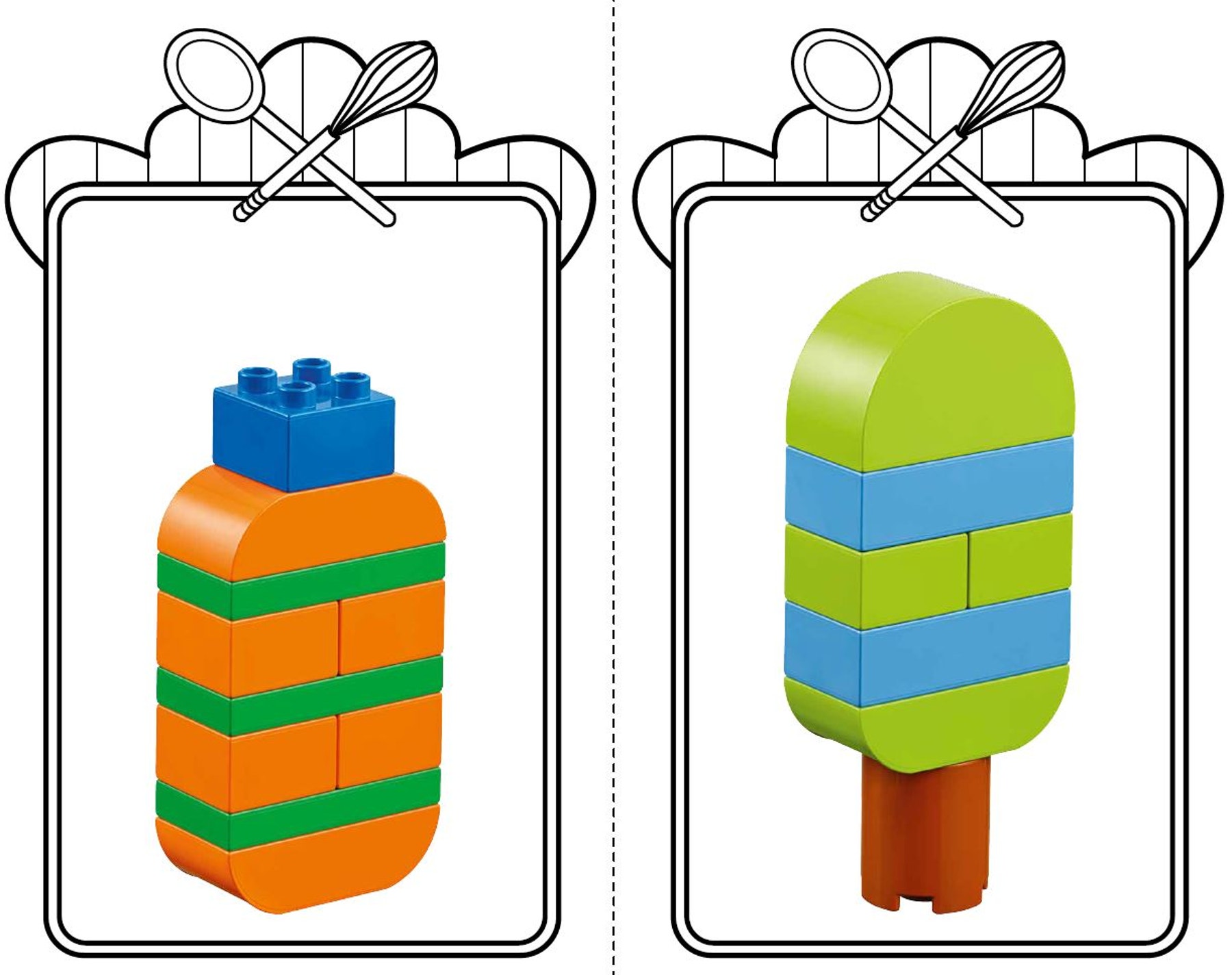Food Patterns
In this lesson children will start using mathematical terms, such as positional language and color and shape names, categorizing items and start recognizing and creating increasingly complex patterns

Connect
- Tell the children that they are going to explore patterns.
- Ask the following questions to help them connect with the lesson:
- What are patterns?
- What are some examples of patterns?
- Point out some patterns around the classroom.
- Tell the children that they are going to become a “living pattern.”
- Ask them to stand in a circle. Tell them to put their hands on their heads, then their toes, then their heads again, and their toes again.
- Explain that this is a pattern and that parts of a pattern repeat, which means that once they understand the repeating order, they will know what comes next.
- Try adding another element (e.g., heads, toes, nose). Call out the pattern a few times as the children follow along, then stop suddenly and ask what comes next.
- Tell them that now they are “patterning pros!”
Construct
- Tell the children that patterns can also consist of shapes and colors, and that they are going to build a food item that contains a pattern.
- Show the printable model cards, pointing out the different patterns.
- Ask each child to pick one of the cards and to replicate the food item shown.
- If necessary, help them sort the bricks they need by color, shape, or both!

Contemplate
- Facilitate a discussion about patterns. Talk about the different kinds of patterns in the food items (e.g., point out that the burger ingredients have a pattern of colors and shapes).
- Consider asking questions like:
- What kind of pattern does your menu item have? Does it repeat colors, shapes, or both?
- How many colors or shapes are in your pattern?
- How many times does your pattern repeat?
Continue
- Encourage the children to create their own patterns.
- Help them decide on colors and shapes they will use, gather the bricks, and build their patterns. Remind them that their bricks must repeat at least once in order for it to be a pattern.
- If they are ready, encourage them to build more complex patterns using different shapes or patterns with more components (e.g., an “ABCD” pattern).
Did You Notice?
Observing the following skills can help you monitor whether the children are developing the necessary competencies in math.
- Using mathematical terms, such as positional language and color and shape names
- Categorizing by one or more attributes and comparing two or more objects
- Recognizing and creating increasingly complex patterns
Teacher Support
Children will:
- Sort by shape, size, and color
- Practice making patterns
- Recognize patterns
For up to 5 Children
Scissors
The Mathematics guidelines from the National Association for the Education of Young Children (NAEYC) and HeadStart have been used to develop the Café+ lessons.
Please refer to the for an overview of the learning values referenced throughout this Teacher Guide.
The learning goals listed at the end of each lesson can be used to determine whether or not each child is developing the relevant early math skills.
These bullet points target specific skills or pieces of information that are practiced or presented during each lesson.




